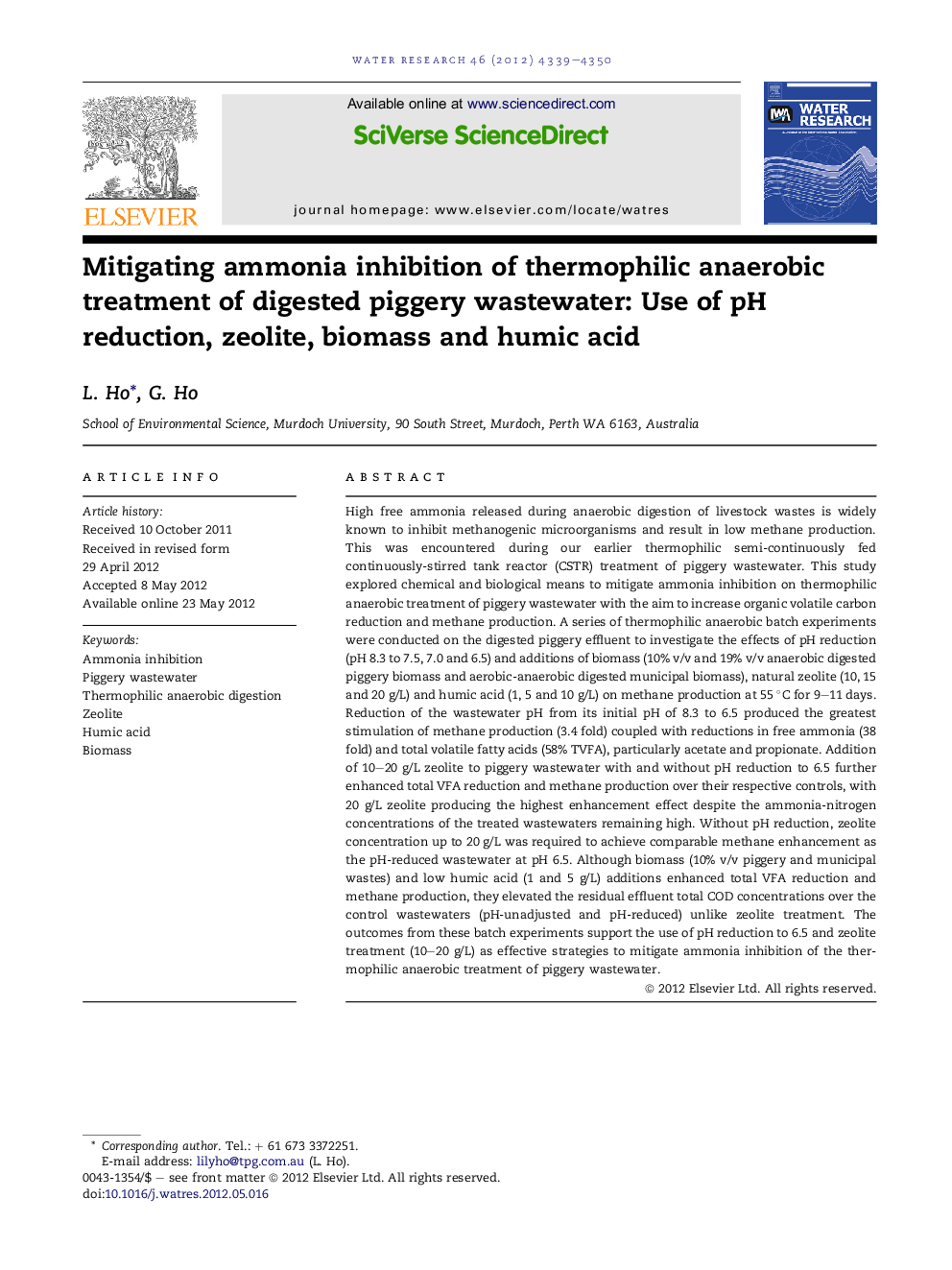| کد مقاله | کد نشریه | سال انتشار | مقاله انگلیسی | نسخه تمام متن |
|---|---|---|---|---|
| 4482203 | 1316851 | 2012 | 12 صفحه PDF | دانلود رایگان |

High free ammonia released during anaerobic digestion of livestock wastes is widely known to inhibit methanogenic microorganisms and result in low methane production. This was encountered during our earlier thermophilic semi-continuously fed continuously-stirred tank reactor (CSTR) treatment of piggery wastewater. This study explored chemical and biological means to mitigate ammonia inhibition on thermophilic anaerobic treatment of piggery wastewater with the aim to increase organic volatile carbon reduction and methane production. A series of thermophilic anaerobic batch experiments were conducted on the digested piggery effluent to investigate the effects of pH reduction (pH 8.3 to 7.5, 7.0 and 6.5) and additions of biomass (10% v/v and 19% v/v anaerobic digested piggery biomass and aerobic-anaerobic digested municipal biomass), natural zeolite (10, 15 and 20 g/L) and humic acid (1, 5 and 10 g/L) on methane production at 55 °C for 9–11 days. Reduction of the wastewater pH from its initial pH of 8.3 to 6.5 produced the greatest stimulation of methane production (3.4 fold) coupled with reductions in free ammonia (38 fold) and total volatile fatty acids (58% TVFA), particularly acetate and propionate. Addition of 10–20 g/L zeolite to piggery wastewater with and without pH reduction to 6.5 further enhanced total VFA reduction and methane production over their respective controls, with 20 g/L zeolite producing the highest enhancement effect despite the ammonia-nitrogen concentrations of the treated wastewaters remaining high. Without pH reduction, zeolite concentration up to 20 g/L was required to achieve comparable methane enhancement as the pH-reduced wastewater at pH 6.5. Although biomass (10% v/v piggery and municipal wastes) and low humic acid (1 and 5 g/L) additions enhanced total VFA reduction and methane production, they elevated the residual effluent total COD concentrations over the control wastewaters (pH-unadjusted and pH-reduced) unlike zeolite treatment. The outcomes from these batch experiments support the use of pH reduction to 6.5 and zeolite treatment (10–20 g/L) as effective strategies to mitigate ammonia inhibition of the thermophilic anaerobic treatment of piggery wastewater.
► pH reduction, zeolite, biomass and humic acid were evaluated for ammonia mitigation.
► pH reduction to 6.5 and zeolite addition greatly stimulated methane production.
► 20 g/L zeolite produced the highest methane enhancement effect.
► Biomass (10%) and humic acid (1 and 5 g/L) additions elevated the effluent TCOD level.
Journal: Water Research - Volume 46, Issue 14, 15 September 2012, Pages 4339–4350